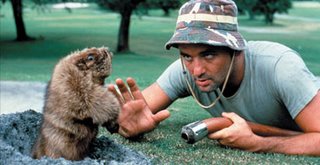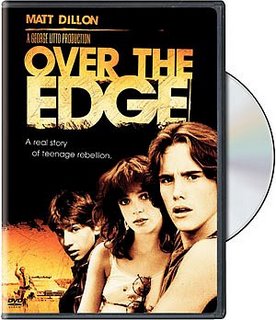
With a baby in the house, I don’t get to see movies in the cinema much these days. So when the opportunity came to take my wife to the movies, we wanted to pick something really good. “Nacho Libre,” which brings together the creators of the hilarious “Napoleon Dynamite” (Jerod and Jerusha Hess) and foulmouthed funnyman Jack Black seemed like a sure thing. Two great tastes that taste great together!
Wrong, dude! How could we have known what a waste of time this movie is? Well, we could have heeded the critics who almost universally hate it. Or maybe we could have thought about the differing comedy styles at work here. “Napoleon Dynamite” used unknown actors to create hilariously un-self-conscious characters. Jack Black’s style, on the other hand, is all about being Jack Black. Unfortunately, “Nacho Libre” sucks all the funny out of Black’s routine, leaving nothing but a lame, fake Mexican accent. Meanwhile, the Hess’s characterizations, which held some nuance in “Napoleon Dynamite,” are simplified into predictable grotesques in “Nacho Libre.”
Black plays Nacho, a monk who cooks at a Catholic orphanage in Mexico. His real passion isn’t Christ, though, it is Lucha Libre, Mexican pro wrestling. For some reason, he hooks up with this really skinny, homeless dude (Hector Jimenez) and the two enter amateur tag-team wrestling matches. Despite their complete lack of “skills,” the team is a crowd-pleaser, and they learn to their delight that in wrestling, even the losers get paid. Nacho starts out using his winnings to buy better food for the orphans, but he winds up scoring some polo shirts and polyester pants in his efforts to seduce a tasty nun (Penelope Cruz look-alike Ana de la Reguera).
Nacho and company don’t bother speaking Spanish; they just speak English with stereotypical Mexican accents, which is brilliant! I’d like to put in a request that all foreign-language films come this way from now on. Imagine how much better a classic like “The Bicycle Thief” would have been without those pesky subtitles. “Mama Mia. Somebody took-a my bike!”
Humor, like food, is purely a matter of taste. Somebody must be enjoying “Nacho Libre” as I hear it has done well at the box office. To my taste, this movie is a plate of soggy chips, with bland salsa. Some of the sight gags, like Nacho and his skinny partner wrestling a couple of midgets, are mildly amusing, but most of the jokes are just plain dumb. I know some people made the same accusations about “Napoleon Dynamite,” but that film had a certain freak-show genius to it. “Nacho Libre” tries for the same spirit, but fails, leaving Jack Black with nothing funnier to do than flaunt his endomorphic physique.
There’s a scene in “Napoleon Dynamite” that exemplifies the way that film found the absurd in daily life. Napoleon and Pedro set up a ramp to jump Pedro’s bike off of. With his unfailing geek karma, Napoleon collapses the ramp when he hits it, racking himself in the process. That scene resonates because we have all jumped our bikes off of ramps like that, and we have all seen a buddy rack his balls on the cross-tube of his bike. And, dude, it was hilarious! Now imagine that instead of that simply photographed scene, they had had Napoleon set off on some important mission on the bike, and he ran off of a cliff, crashing spectacularly. That’s what “Nacho Libre” is like. Thanks to a much bigger budget, the scenes are bigger and better photographed, but they lack that “Dynamite” spirit. The question in my mind is whether the Hess’s are a one-hit wonder, or if they will someday recapture that spirit that made “Dynamite” so enjoyable, and put out a movie worth watching.
As for “Nacho Libre,” one thing that I will credit it for is timeliness. Given all the immigration-related turmoil surrounding Mexicans these days, what we really needed was a movie that shamelessly mines the stereotype of Mexicans as greasy, low-rider driving taco-eaters. “Nacho Libre” is that movie. Thanks to a couple of white Mormons from Idaho (the Hesses) and Mike White (the whitest white man living), we can laugh
at Mexicans instead of
with them.
1 star out of 5.








